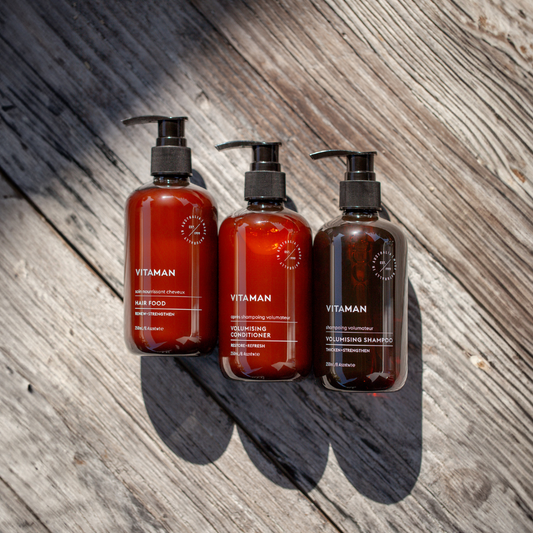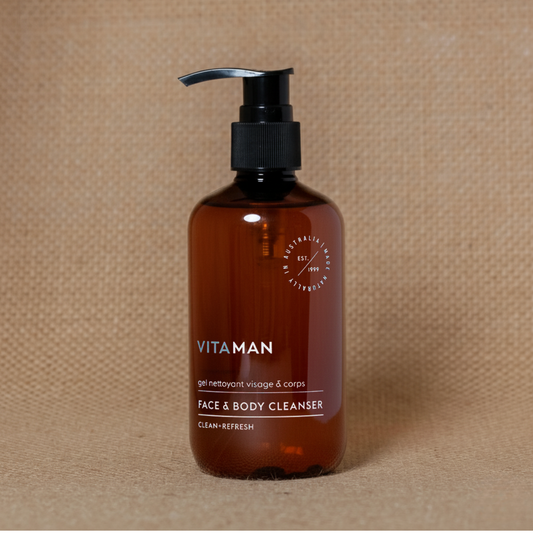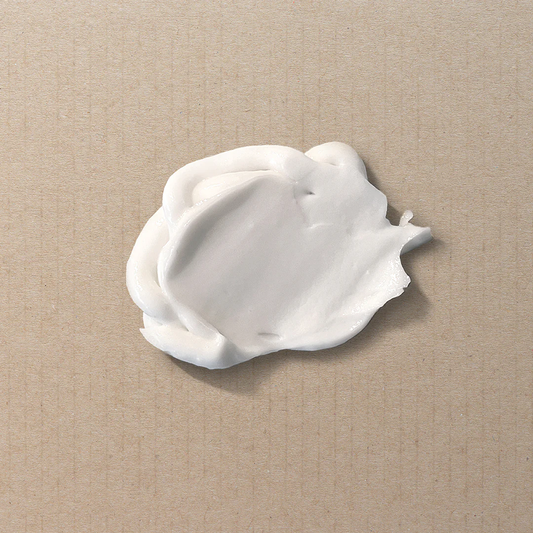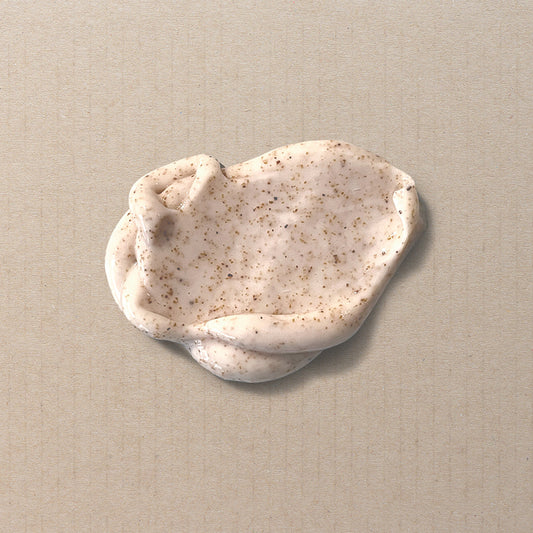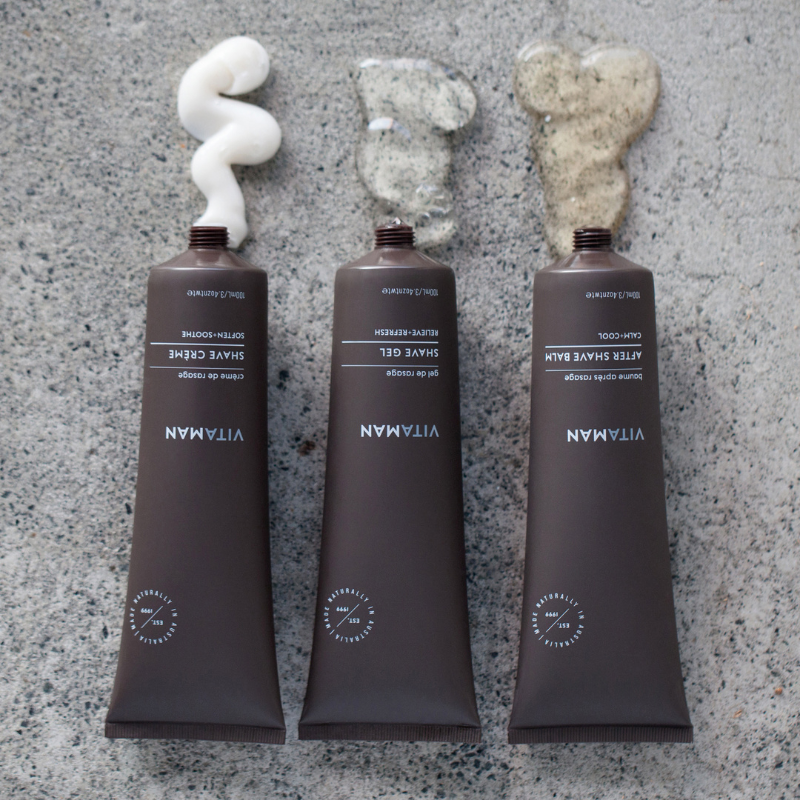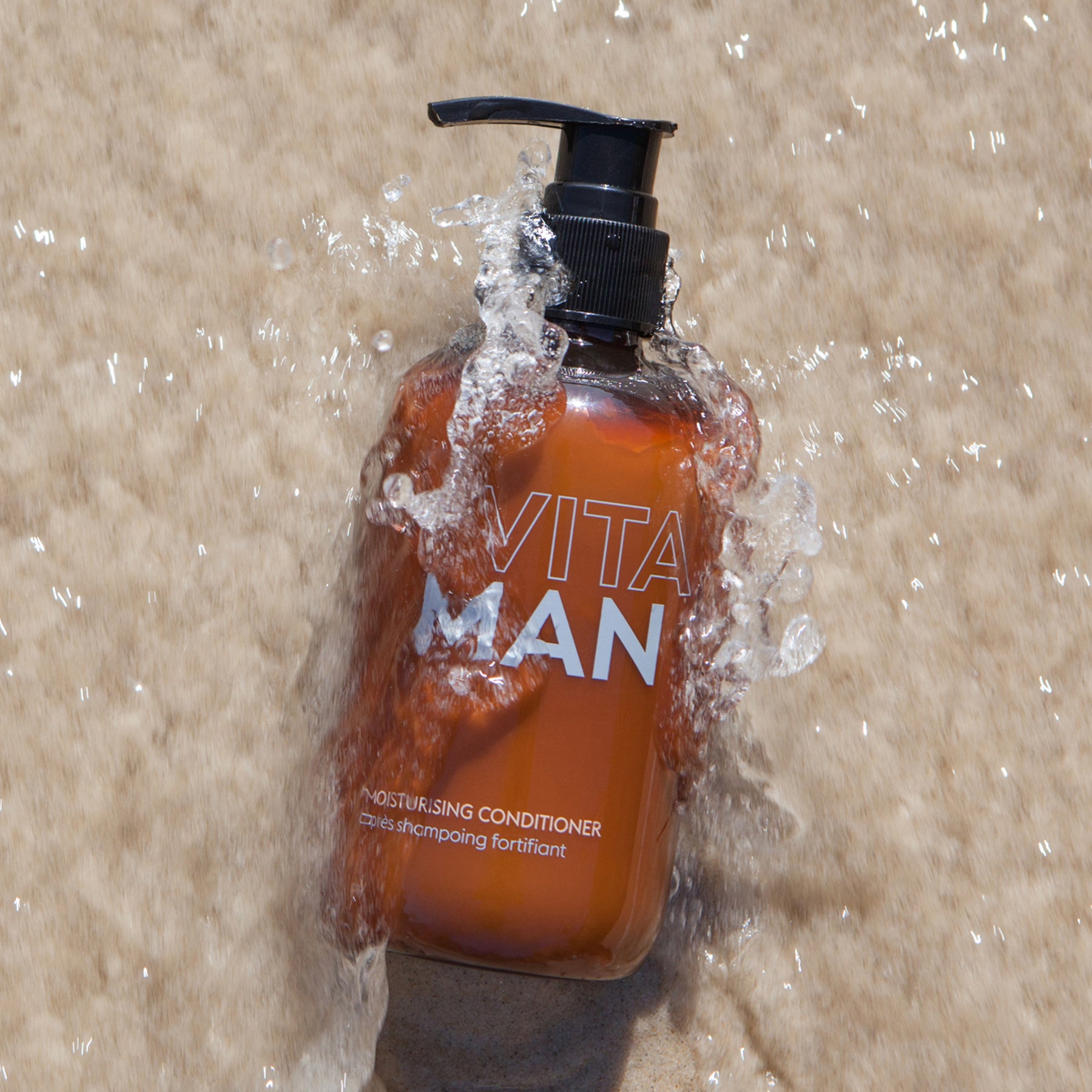The U.S. is seriously lagging when it comes to banning toxic chemicals in men’s grooming products. While our friends across the pond in the EU have banned about 1,400 chemicals, at the time of writing this article, the FDA has only restricted 11.
So, what does this mean for you, the guy trying to keep his skin and hair in check? It means you're likely slathering on some questionable stuff every morning.
In this guide, we'll explain what to watch out for, how to spot these sneaky ingredients, and—thankfully for you—suggest some safer alternatives.

1. Parabens
Found in: Shampoos, conditioners, body washes, and moisturizers.
What they do: Parabens are preservatives introduced in the 1950s to extend the shelf life of grooming products by keeping mold and bacteria at bay. Sounds good, right? Not so fast.
Why they're bad: Parabens have been linked to hormone disruption, particularly affecting testosterone levels. Studies from the Environmental Working Group have even associated parabens with certain cancers, making them less of a "lifesaver" and more of a hidden risk.
Common aliases: Parabens love to hide under these names:
- Methylparaben
- Propylparaben
- Butylparaben
Better alternatives: Opt for natural preservatives like Vitamin E (tocopherol), Rosemary Extract, or Neem Oil.
These ingredients not only keep products fresh but also are gentler on the skin and steer clear of hormone-disrupting effects.
They're ideal for anyone trying to avoid potential endocrine interference while keeping their grooming products safe and effective.
What Is The Difference Between US And EU Cosmetic Regulations?
The European Union has banned or restricted over 1,600 chemicals in cosmetics due to health concerns, while the U.S. Food and Drug Administration (FDA) has restricted only 11.
2. Phthalates
Found in: Shampoos, body washes, and colognes.
What they do: Phthalates make products stick to your skin and keep fragrances smelling fresh for longer. The CDC says about 75% of Americans have measurable phthalate levels in their bodies.
Why they're bad: Linked to hormone disruption, reproductive issues, and birth defects. Phthalates are essentially hormone hijackers.
Where they hide: Look for sneaky names like:
- Diethyl phthalate (DEP)
- Monoethyl phthalate (MEP)
Better options: Essential oils like jojoba and olive oil can help products adhere without health risks. They're perfect for natural colognes and lotions.

3. Formaldehyde
Found in: Shampoos, hair gels, and even some body washes.
What it does: This notorious preservative (think preserving dead bodies - lovely) keeps products fresh by preventing mold and bacteria growth.
Think of it as the "embalming" chemical, even for the living.
Why it's bad: The American Cancer Society lists formaldehyde as a carcinogen linked to leukemia, asthma, and neurological toxicity.
Alias alert: It's sneaky; watch for names like:
- Formic aldehyde
- Methanethiol
Instead, try: Products preserved with radish root or rosemary extract. These do the job without the "permanent" side effects.
4. Fragrance/Parfum
Found in: Just about everything—colognes, moisturizers, shampoos, body washes, you name it.
What it does: "Fragrance" is an umbrella term for a secret blend of chemicals (sometimes over 3,000), often including phthalates.
Why it's bad: The EWG warns that fragrances can cause allergies, hormone disruptions, and asthma. Plus, 75% of "fragrance" products contain phthalates.
Sneaky labels: Look for "fragrance" or "parfum."
Alternative: Natural essential oils like peppermint and lavender bring a fresh scent minus the mysterious chemicals.
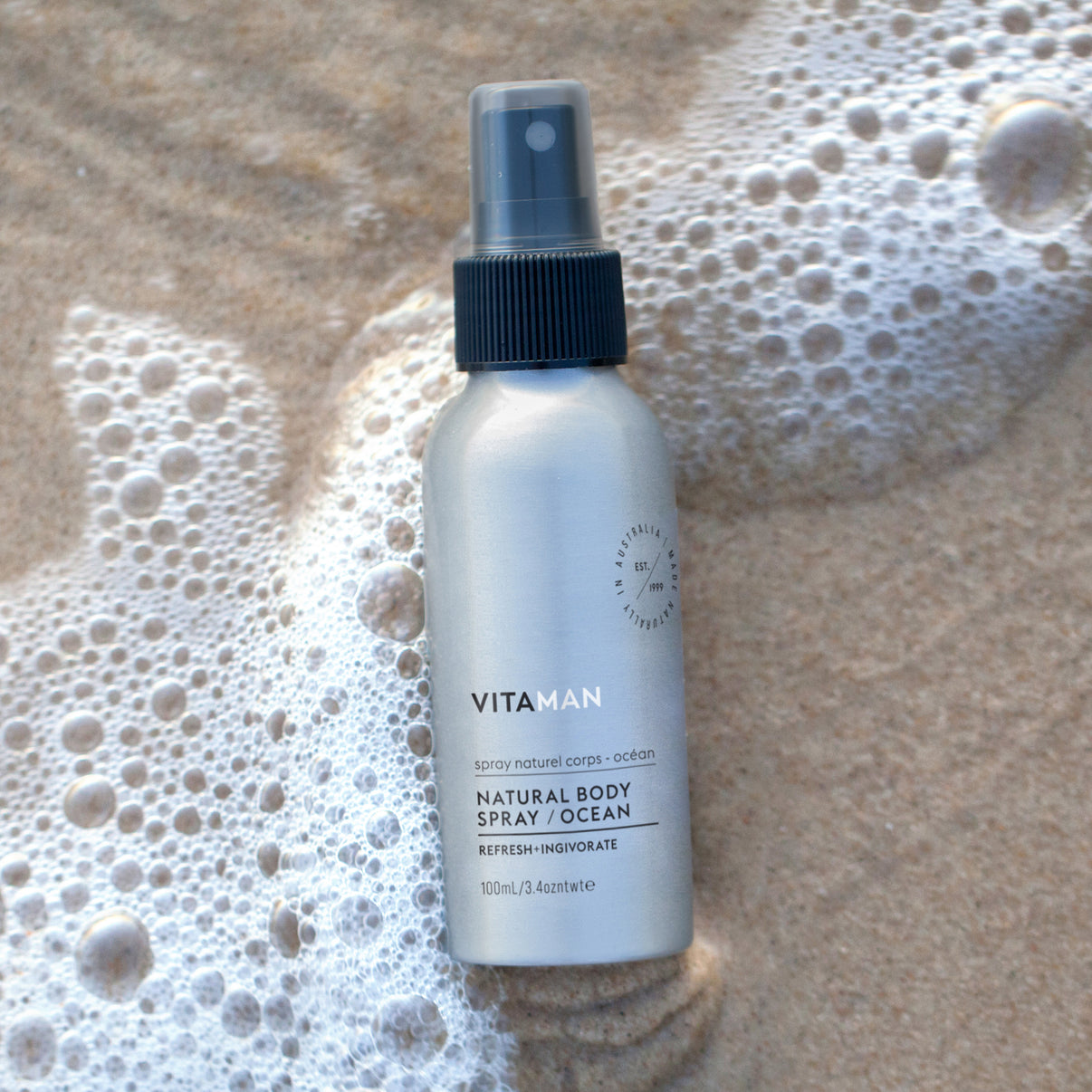
Aluminum-free formula protects without causing underarm irritation or staining shirts. Our signature peppermint aroma keeps you fresh all day.
SHOP NOW5. Mineral Oil
Found in: Shaving creams, moisturizers, and body lotions.
What it does: Mineral oil is a byproduct of petroleum and creates a barrier on the skin to lock in moisture. But it also traps dirt and bacteria.
Why it's bad: The International Agency for Research on Cancer (IARC) links mineral oils to non-melanoma skin cancers. It also clogs pores, leading to breakouts.
Common aliases: You might see it as:
- Paraffinum liquidum
- Petrolatum
- Cera microcristallina
Upgrade to: Go for shea butter or coconut oil for moisturizing without the pore-clogging effect.
How Are Ingredients Listed On Skin Care Products?
Many skincare brands use Latin or scientific names, which can sometimes obscure potentially harmful ingredients.
These complex terms make it harder for consumers to recognize familiar chemicals, and they often mask controversial ingredients like preservatives or fragrance components.
6. Butylated Hydroxytoluene (BHT)
Found in: Moisturizers, sunscreens, and lip balms.
What it does: BHT acts as a synthetic antioxidant to preserve products. But don't let the term "antioxidant" fool you.
Why it's bad: Linked to hormone disruption and liver toxicity, long-term exposure has been shown to affect reproductive health.
Look out for: BHT is often labeled just as "BHT."
Safer choices: Look for products with Vitamin E or green tea extract, both effective natural preservatives.

7. Aluminum
Found in: Antiperspirants and some deodorants.
What it does: Aluminum compounds block your sweat glands to stop perspiration and kill odor-producing bacteria.
Why it's bad: Studies suggest that high aluminum exposure may increase Alzheimer's risk. Plus, your skin absorbs around 60% of what you put on it - do you really want Aluminum in your blood stream?
Aliases to watch for:
- Aluminum zirconium
- Aluminum chlorohydrate
Try this instead: Natural deodorants sometimes get a bad rep, but those containing baking soda, arrowroot powder or powerful natural ingredients like Peppermint will keep you fresh without supplementing your circulatory system with Terminator-levels of metal.
8. Coal Tar Dyes
Found in: Hair dyes and anti-dandruff shampoos.
What it does: Coal tar is a byproduct of coal processing and is used for color and anti-dandruff effects.
Why it's bad: The National Institute for Occupational Safety and Health (NIOSH) classifies coal tar as a carcinogen and warns it can cause neurological issues.
How it's listed: Look for "FD&C" or "D&C" followed by a color and number (e.g., D&C Red No. 33).
Opt for: Natural colorants like henna or beetroot powder.
9. PEG Compounds
Found in: Body washes, shampoos, and moisturizers.
What they do: PEGs (polyethylene glycols) are used to thicken products and make them glide smoothly on your skin.
Why they're bad: PEGs can be contaminated with ethylene oxide, a known carcinogen. The EWG links them to organ toxicity and immune dysfunction.
Listed as: Keep an eye out for terms like:
- Polyethylene glycol
- PEG followed by a number
Healthier choices: Products with aloe vera or honey are safe, natural thickeners.
10. Siloxanes
Found in: Hair products, deodorants, and facial moisturizers.
What they do: Siloxanes make products feel silky and help them dry faster.
Why they're bad: Linked to hormone disruption and fertility issues, according to Canada's Environmental Defence.
Common aliases: You'll see names like:
- Cyclopentasiloxane
Instead, go for: Jojoba oil or argan oil for that smooth application.
11. Triclosan
Found in: Antibacterial soaps, deodorants, and shaving creams.
What it does: Triclosan is an antimicrobial agent that kills bacteria but also comes with a few extras.
Why it's bad: Triclosan has been linked to hormone disruption, liver toxicity, and even antibiotic resistance.
The Journal of Clinical Endocrinology and Metabolism states it can negatively impact thyroid hormones.
Label watch: Listed as:
- Hydroxy diphenyl ether
Alternative: Look for tea tree oil or grapefruit seed extract for natural antibacterial power.
12. Plastic Microbeads
Found in: Exfoliating face scrubs, body washes, and toothpastes.
What they do: Microbeads act as exfoliants to scrub away dead skin cells. However, they don't break down, leading to serious environmental harm.
Why they're bad: A single shower with a microbead-based product can release up to 100,000 plastic particles into the ocean, according to UN Environment.
Listed as: Watch for names like:
- Polyethylene (PE)
- Polypropylene (PP)
Alternative: Opt for exfoliants with sugar or sea salt—effective for skin and safe for the planet.
'Bonus' Toxic Ingredients
As if parabens and phthalates weren't enough, here are a couple of bonus offenders you'll want to watch out for. Brace yourself, because these last two are particularly sneaky.
Lead
Found in: Hair dyes, lip balms, and sometimes even men's eyebrow and beard tints (believe it or not).
What it does: Lead might sound like something best left to history books, but it still finds its way into certain grooming products
Lead is used primarily for its pigmenting properties, so lead is lurking in products to give that long-lasting color.
Why it's bad: The FDA warns that lead exposure—even at low levels—is toxic over time and can cause reproductive and neurological issues. Bottom line: it's better suited for pencils than your grooming routine.
Common aliases: Lead often goes incognito as:
- Lead acetate
- Chromium
Safer swaps: If you're aiming to keep your hair and beard routine as clean as your conscience, look for products colored with natural pigments like iron oxides or beetroot powder. They'll give you the tint without the toxicity.
Oxybenzone
Found in: Sunscreens, particularly in formulations labeled as broad-spectrum or water-resistant.
What it does: Oxybenzone acts as a UV filter, absorbing harmful rays before they can reach your skin.
Why it's bad: Harvard Health warns that oxybenzone can mess with hormone levels and has been linked to low birth weights in babies. Even worse, it's damaging to marine life and has been banned in some locations to protect coral reefs.
Common alias: Oxybenzone
Alternative choices: Swap out oxybenzone for zinc oxide or titanium dioxide sunscreens, which are mineral-based and sit on top of your skin rather than being absorbed. They won't just keep your skin safe—they'll also keep the ocean a little cleaner.

Recap
Do a quick label check the next time you grab your favorite grooming product.
Remember, your skin absorbs around 60% of what you put on it (according to the American Journal of Public Health). Natural grooming products, free from these chemicals, are a solid investment for your health and peace of mind.
And don't worry—as you may well have guessed—our natural men's grooming products are free from these nasties. You deserve better.
What to read next? You've seen the bad, now it's time for the good. Click here to discover what goes into our products. (Spoiler alert: they're all good.)




